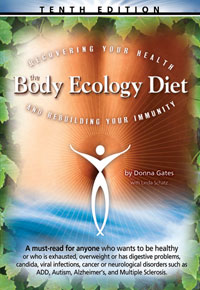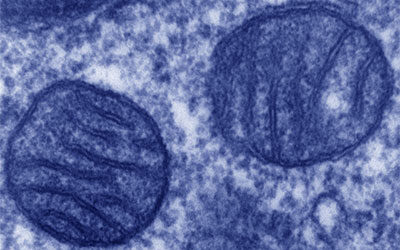How does one know if meat and fish is still fresh? What about milk and eggs—how long do they last? Thanks!
Donna’s response:
Meat should be bright pink or red. Fish should be firm and have no fishy smell. If the head is on, then the eyes will be clear- not cloudy.
It’s actually legal for meat to be repackaged with a later date, so only purchase from a trusted source. Examine the meat and fish carefully and if you follow the guidelines above, you should be able to determine their freshness.
If you’d like the convenience of shopping online try the wild Alaskan salmon from Vital Choice. You can trust them for both freshness and purity – including purity from harmful toxins present in so much other fish on the market.
For meat, poultry, eggs, there’s nothing like home delivery from US Wellness Meats online store for the ultimate in freshness.
Regarding eggs (a staple of the Body Ecology program), they can last 3 to 5 weeks if purchased before the date on the carton.
This makes eggs a convenient food to keep on hand at all times, since there is little chance for spoilage.
Try this easy at-home test to see if an egg is good:
Fill a bowl with water. A very fresh egg will sink to the bottom while a bad egg will float.1
Are you worried about salmonella? Pathogens like bad bacteria can cause food-borne illnesses and their uncomfortable symptoms. You might be relieved to know that you can protect yourself and your loved ones from food-borne illnesses by building a strong, hardy, vital inner ecosystem. The microflora in your intestines play many roles and one of them is to keep you healthy by protecting your from pathogens in foods.
Learn more about food poisoning and how to protect yourself naturally in Foodborne Illness: The 7 Natural Ways to Defend Yourself Against It.
Always refrigerate your milk (pasteurized or not) at or below 40 degrees Fahrenheit.
If you want to make your milk last even longer and be easier to digest, consider making it into milk kefir. Ancient cultures fermented milk to preserve it, and you can do the same thing today, especially with unpasteurized milk!
Althought not for everyone, milk kefir can be a healthy addition to your diet if you are in stage 2 of the Body Ecology program (Stage two starts when you have re-populated your gut with dairy-loving bacteria by drinking probiotic liquids like Coco-Biotic). Homemade milk kefir from unpasteurized milk contains healthy proteins, minerals and fats that can nourish your body if it’s a food that works for your body.
You can use organic, pasteurized milk for homemade kefir too. In fact, fermenting pasteurized milk makes it safer to drink and easier to digest. Pasteurized milk often contains pathogens since it lacks the beneficial microflora found in raw milk taken from healthy grass-fed cows. When you ferment pasteurized milk it adds back enzymes lost during pasteurization. Read more about the dangers of pasteurized foods in: The Pasteurized Foods You Should Consider Avoiding And the Healthy Reasons Why.
Body Ecology’s fermented food and drink starters can help you preserve foods longer AND help you establish a healthy inner ecosystem. Kefir Starter is great for making your own milk or Young Coconut Kefir!
When it comes to meat, eggs, fish and poultry, these tips and your healthy Body Ecology program will help you avoid the worries of food poisoning, so you can be at your healthy best!
Donna
General Guidelines to Keep You Safe
The best way to keep you and your family safe from foodborne illness is to enhance your immunity naturally by eating a healthy probiotic diet. When you have a healthy inner ecosystem, pathogenic bacteria and yeast will find it difficult to gain ground inside you and make you sick. Besides that, follow these guidelines at the market and at home as you choose and prepare healthy foods.
- Look at the product, not the date.
- At home, when in doubt, throw it out.
- Question your supplier, whether a store or individual seller. Find out how long they display their meats.
- Treat every perishable as if it will melt like ice cream. Pack it in ice, in a cooler and put it away as soon as possible.
To give you an idea of how long you can store some common foods, use our easy list:
- Roasts, steaks, chops 3-5 days (wrapped loosely)
- Ground, chopped or stew meat 1-2 days (wrapped loosely)
- Whole chicken, turkey, duck, goose 3-5 days (wrapped loosely)
- Cut-up poultry 3 days (wrapped loosely)
- Fish 3 days (stored on ice and covered)
- Fatty fish, like salmon 1-2 days (stored on ice and covered)
- Milk 5-7 days after the sell-by date
- Eggs 3-5 weeks if purchased before the date on the carton
- Butter 2 weeks (covered)
And to obtain the added protection against pathogenic microflora that might be on the foods you eat and drink, make your own probiotic-rich fermented foods and drinks. They will help you create a more robust inner ecosystem where beneficial microflora flourish to keep you healthy and strong.
Sources:
1How To Tell If You’ve Got a Bad Egg.
2 Severson, Kim, “The Dating Game,” The Chronicle, 10 Jan 2001.










0 Comments